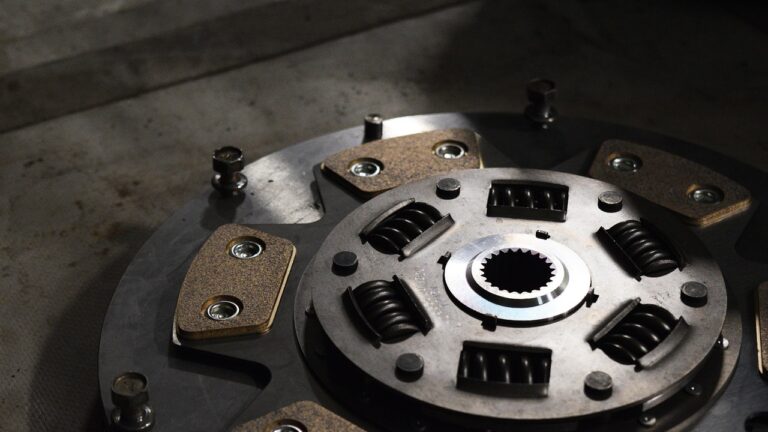If you’ve ever been curious about the inner workings of cars, especially manual transmissions, you must know about the flywheel. It’s one of the most vital components in manual cars. Continue reading below to find out the flywheel’s many roles for a comprehensive look at manual transmissions.
What Is the Flywheel?
The flywheel is a robust, disc-shaped component designed to store and release rotational energy. It’s connected to the engine’s crankshaft, and its main function is to maintain the engine’s momentum between the power strokes.
This piece ensures that the engine runs smoothly while providing a friction surface for the clutch disk. The balancing act of the flywheel between storing and releasing energy is a critical aspect of a vehicle’s operation, enabling the car to move and stop smoothly.
The Ability to Store Rotational Energy

When the engine’s pistons fire and generate power, the flywheel absorbs any excess energy produced during these power strokes. It stores this energy as rotational energy due to the flywheel’s spinning motion.
During non-power strokes, when the engine isn’t producing as much power, the flywheel releases the stored energy. This ensures the power output is consistent and smooth.
The Power of Smooth Engagement
Whenever a driver operates the clutch pedal, the flywheel plays an integral part in a seamless transition. The clutch disc—sandwiched between the flywheel and the pressure plate—engages and disengages from the flywheel as the clutch pedal operates.
The flywheel will start to spin from the engine’s power and then transfer it to the transmission. Afterward, the transmission can distribute power to the wheels. This in-depth design is what makes driving a manual car effortless.
Physical Features of the Flywheel
The power of rotational energy and smooth engagement aren’t the only features you need to know about. Keep reading for a more in-depth look at manual transmission components like the flywheel.
Materials
Flywheels contain dense, robust materials, such as cast iron or steel. The hefty weight allows the flywheel to store a substantial amount of rotational energy and provides more reliable friction for the clutch disc. This material choice is the driving factor to a long-lasting flywheel and steady vehicle operation.
Clutch Surface
The clutch surface of a flywheel transmits power from the engine to the transmission to the wheels. It’s a flat and smooth surface located on the edge of the flywheel to engage and disengage the clutch disc.
Constant friction and natural wearing will result in resurfacing maintenance or replacement. As long as the component is in great shape, this intricate interaction will permit a smooth transition of power.
Ring Gear
Lastly, there’s the flywheel’s ring gear. It’s on the outermost edge of the flywheel and engages with the start motor. As the driver turns the key in the ignition, electricity from the battery goes to the starter motor.
The starter motor’s pinion gear meshes with the ring gear on the flywheel, causing the flywheel, and consequently the engine’s crankshaft, to rotate. This rotation starts the process of internal combustion in the engine and allows the vehicle to start up.
The role of the flywheel in manual transmissions is undeniable. Without it, cars wouldn’t generate sufficient energy to operate. Remember this the next time you plan to fix up an older car or want to try driving a stick shift.

